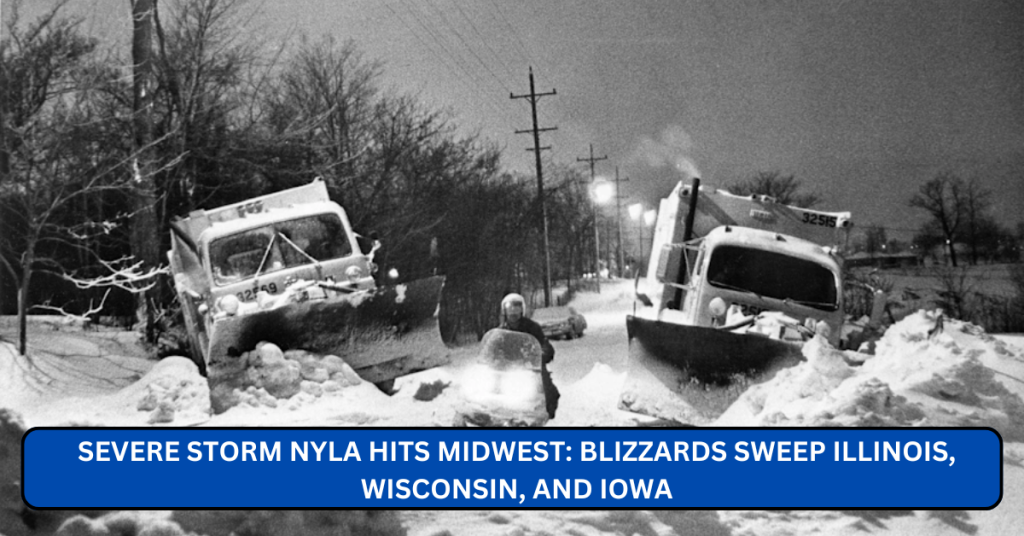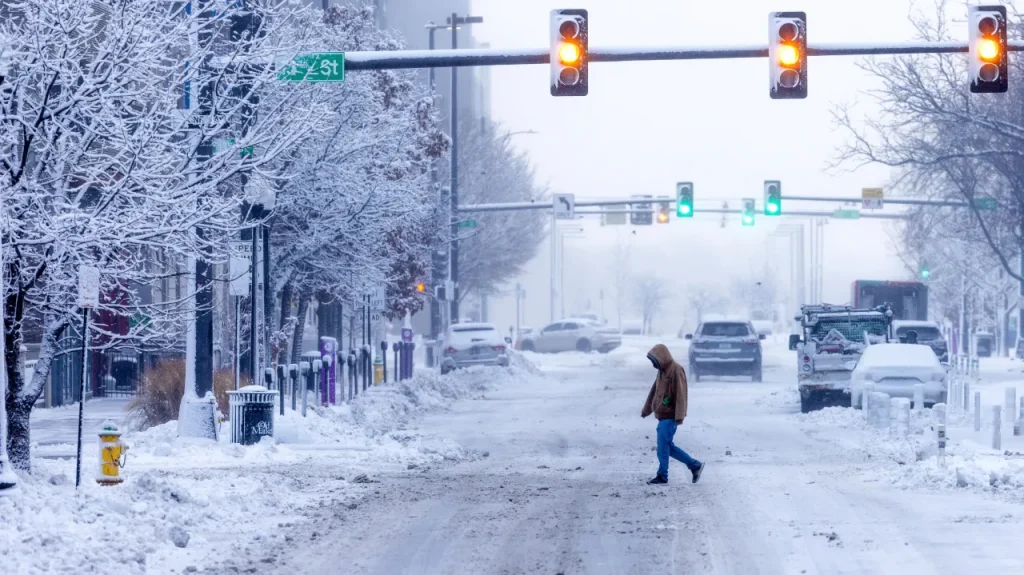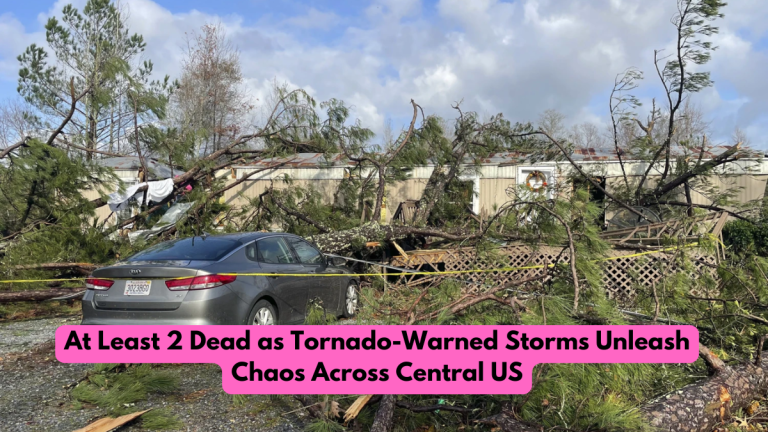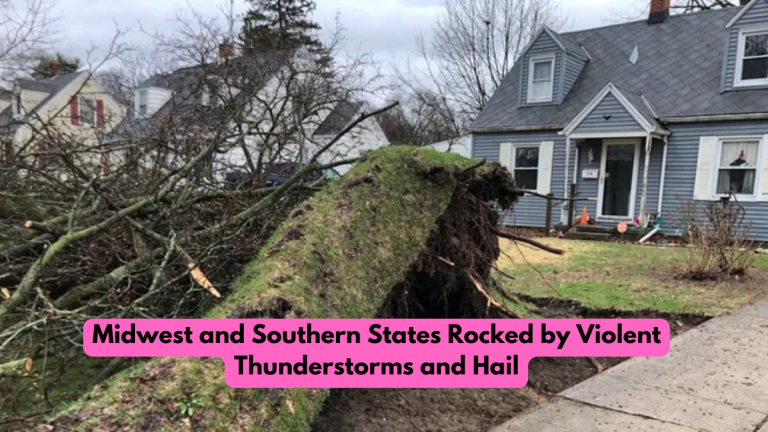
A powerful winter storm named Nyla has swept through the Midwest, bringing dangerous blizzard conditions to Wisconsin and Iowa, while Illinois faces severe thunderstorms and tornado threats. The storm has caused widespread travel disruptions, power outages, and safety concerns across multiple states. Authorities have urged residents to take precautions as hazardous weather continues to impact the region.
Blizzard Conditions Paralyze Iowa and Wisconsin
The National Weather Service (NWS) issued blizzard warnings across Iowa and Wisconsin as Winter Storm Nyla unleashed heavy snowfall and high winds. Snow accumulations of up to 12 inches have been reported in some areas, with winds gusting over 45 mph, reducing visibility to near-zero.
In Iowa, road conditions have deteriorated rapidly. The Iowa Department of Transportation has reported multiple road closures due to accidents and dangerous driving conditions. Authorities are advising residents to avoid non-essential travel.
Wisconsin has also been heavily affected, particularly in its central and northern regions. Power outages have been reported in several counties as ice and heavy snow weighed down power lines. Crews are working to restore electricity, but the continuing snowfall is complicating efforts.
Severe Storms and Tornado Warnings in Illinois

While the northern parts of the Midwest battle blizzards, Illinois is experiencing a different threat. The storm system has brought severe thunderstorms, capable of producing large hail, damaging winds, and tornadoes. The Illinois Emergency Management Agency has issued a tornado watch for several central Illinois counties, urging residents to stay alert.
Reports of property damage and fallen trees have emerged as strong winds batter the region. Several power outages have also been reported, affecting thousands of residents. Authorities continue to monitor the situation, urging residents to seek shelter if tornado warnings are issued.
Impact on Transportation and Infrastructure
The storm has caused significant transportation disruptions. Interstate highways in Nebraska and Kansas were shut down due to severe weather conditions before the storm moved eastward. In Iowa and Wisconsin, snow-covered roads and low visibility have led to delays and accidents.
Air travel has also been impacted. Chicago’s O’Hare International Airport and Des Moines International Airport have reported multiple flight cancellations and delays due to hazardous weather conditions. Travelers are advised to check with airlines before heading to the airport.
Power Outages and Emergency Response
The storm’s strong winds and heavy snowfall have resulted in power outages across several states. Utility companies are working to restore electricity, but conditions remain challenging. Residents are encouraged to report outages to their local power companies and prepare for prolonged disruptions.
Emergency response teams are actively assisting affected communities. The Federal Emergency Management Agency (FEMA) and state agencies are closely monitoring the situation, ready to provide aid where needed. Local governments are opening emergency shelters for those in need of warmth and safety.
Safety Recommendations for Residents

Authorities have issued the following safety guidelines for residents in affected areas:
- Avoid unnecessary travel until road conditions improve. If you must travel, keep an emergency kit with blankets, food, and water in your vehicle.
- Stay updated on weather alerts through the National Weather Service and local news.
- Prepare for power outages by having flashlights, batteries, and non-perishable food stocked at home.
- Secure outdoor objects to prevent damage from high winds.
- Seek shelter immediately if a tornado warning is issued in your area.
Looking Ahead
As Winter Storm Nyla continues its path across the Midwest, weather experts predict it will weaken over the next 24 hours. However, lingering snowfall and strong winds may continue to impact travel and infrastructure.
State officials are coordinating with federal agencies to ensure prompt disaster relief and assistance. Residents are advised to remain cautious, follow emergency guidelines, and stay informed about changing weather conditions.
For the latest updates on weather alerts and safety guidelines, visit the National Weather Service and state emergency management websites.
Stay safe and stay informed.



